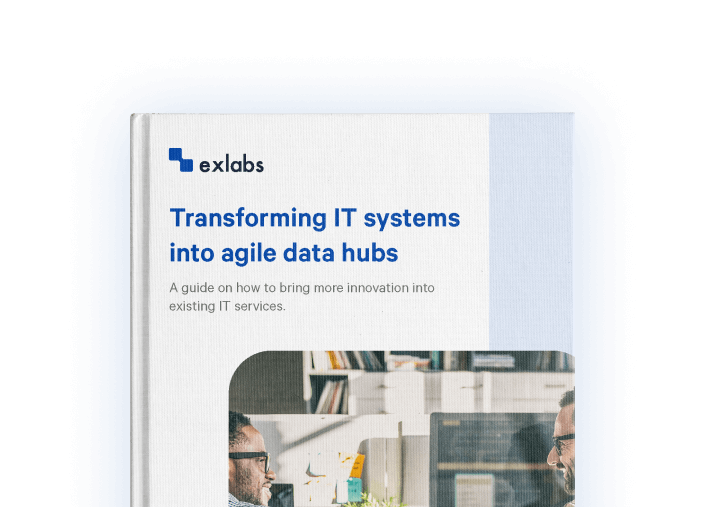Maximize your savings by automatizing workflows McDonald's Use Case
Automatization of workflow processes with AI is the future that we already see happening today. McDonald’s is investing in AI solutions by acquiring Apprente, Dynamic Yield, and Plexure, their tools and know-how.
With workflow automation systems, we not only boost performance but also generate financial savings. Find out what challenges lie ahead before you employ the relevant technologies. And why it’s worth implementing them in the first place.
In 2019, McDonald’s acquired Apprente, a company that uses AI to understand speech and convert it into text. The technology is already being tested in drive-thrus and may appear in kiosks in the future to facilitate ordering and the use of mobile apps. Previously, McDonald’s also acquired Dynamic Yield and a minority stake in Plexure, a mobile application provider.
Drive-Thru uses the following technologies:
- Microphone – the recording device must provide superior quality recordings in such a way that artificial intelligence can faithfully convert an oral utterance into text.
- Camera – can be used to authenticate people collecting orders.
- Touch panel – an option to place traditional orders and to confirm spoken orders.
- Receipt and order confirmation printer – a must-have element of the device.
- Network connection – the speech recognition algorithm with supporting algorithms will probably be delivered as a network service; it will not be installed directly on devices. Therefore, the device must have a permanent Internet connection.
McDonald’s bets on automating many daily tasks. Thanks to AI-based Apprente technology, McDonald’s will be able to accept drive-thru orders with no employees. The technology facilitates the conversion of speech to text by eliminating errors related to ambiguous wording. Thanks to this, the resulting text can be saved as an order for execution. This isn’t a very obvious solution for a food retailer, but still, it is a sign that McDonald’s doesn’t want to be left behind. By automating processes, it adapts to the digital economy and strengthens its position in the market.
McDonald’s urge to protect its know-how at all costs and strengthen the essence of AI within its own business is pushing it to take over other startups. That said, other solutions on the market can be used to convert speech to text, but they are not as effective in interpreting ambiguities correctly as Apprente.
One of the speech-to-text services is offered by the Microsoft Azure Cloud as part of Cognitive Services. It supports 85 different languages, and we can customize service operating models to increase accuracy in meeting industry-specific deadlines.
Another noteworthy solution is Speech-to-Text by Google Cloud. Here we gain access to the API using Google’s AI (which is also used on YouTube to generate automatic subtitles for movies). Content can be transcribed in real time or from saved documents. The technology is also used to operate selected products or services via voice commands which is similar to the McDonald’s drive-thru.

Transforming IT systems
into agile data hubs
Read the guide on how to manage complex IT premises and still be open for innovation, use of new technologies, and don’t suffer from the maintenance burden.
Data extraction as effective value creation and delivery
McDonald’s is a particularly fine example of how more and more companies are looking for data extraction solutions. Because McDonald’s can accept orders via AI and use speech-to-text technology, it greatly improves one of its key workflows. This translates into cost-effective value delivery to customers. A similar, but equally interesting example is the Exlabs barcode scanner.
Exlabs has prepared a mobile barcode scanner which, after scanning the data, sends it as a request to a specialized external database. The user can then scan codes from the food products and receive their exact composition, the number of calories, and other details to their mobile app. This data extraction solution can significantly improve the consumer experience through proper data management and processing. And what is more, it doesn’t require a high level of commitment on the part of the programmers.
The decision to implement solutions based on data extraction presents some specific challenges that each company will face:
- Inexperience in processing audio, video, and photo files. This problem can be tackled by using solutions such as Microsoft Cognitive Services, Vision AI, and Video AI from Google. For this, we can use pre-trained machine learning models from Modelzoo.co.
- Poor data quality affecting the ability to synthesize meaningful results.
- Little or no control over the input devices on the data channels that come into contact with consumers (e.g. mobile phones acting as photo/video data gateways).
- Complicated data lifecycle and management.
- Localization (there are different possible interpretations of many data elements depending on the language/culture).
- Additional due diligence required for risk modeling.
- It often requires a more mature environment with an appropriate legal department, CIO, etc.
Data management, scalability, and compliance
Companies looking to transform their existing environments into automated collaborative ecosystems need to make efforts to think through the issue of data management. One of the tasks is to control the data life cycle and its persistence. For this purpose, we can reach for another tool provided by external suppliers – orchestrated data flows, the easiest of which is the AWS S3 Lifecycle Policy offered by Amazon.
Another important challenge is the scalability and cost of data storage. We need to know that we don’t have to keep all files forever. Some data can be deleted almost immediately after processing, while others can be archived in wallet-friendly mass storage such as AWS S3 Glacier and Microsoft Azure Storage in the Archive Access Tier variant.
To create a state-of-the-art solution that uses data extraction, we also need to ensure compliance and permits. For example, if we need access to users’ devices or data, we must first obtain the appropriate consent. For this purpose, it is also worth thinking about creating an appropriate, safe archive for storing such data. Ideally, the data should be kept separate from the rest of the data area to ensure an adequate level of security.
Finally, remember that the effects of workflow automation systems depend primarily on the quality of the input data. Are the photos sharp and in the correct format? Is the audio distorted? The quality of photos can often be enhanced or adapted to the needs of the system using various tools, often programming. Python and Python libraries such as sckit-image and NumPy are some of such solutions, while audio files can be cleaned up using web interfaces. It is a solution offered by, among others, Mozilla. Data pre-processing is a particularly important and often the most labor-intensive element in the process of building automation systems, which should be kept in mind.
Conclusion
Artificial intelligence is one of the fastest-growing technologies, which is reflected in more and more aspects of our lives. AI-based workflow automation allows to open up enormous saving potential in the long run, but it is not a simple task. To be efficient, such a solution must be employed with the highest quality of algorithms and data. One way to achieve this is to acquire startups, which allows you to obtain the right tools and know-how at a relatively low cost. We do not know how technology will develop in the future, but we can be sure that AI will be more and more visible in the broadly understood business.
Need our help?
Let us know more about your needs.

Managing Director
& Co-Founder of Exlabs